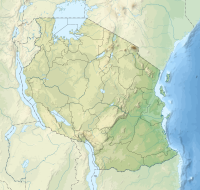 | ||
| Stone Town | ||
| province | ||
|---|---|---|
| Tanzania has no parent region. | ||
| Residents | unknown | |
| no value for residents on Wikidata: | ||
| no tourist info on Wikidata: | ||
| location | ||
| ||
Stone Town is that since the year 2000 UNESCO World Heritage counting historical center of Zanzibar City on Zanzibar.
background
Stone Town is the historically grown Swahili city with Omani roots, it is located on the west side at the port of the island. The old town of Zanzibar was designated by UNESCO in 2000 World Heritage declared and has been the main cultural attraction of the island ever since. The buildings in the old town are made of shell limestone. Their owners were the local Arab traders who had made money by trading ivory, gold, spices and slaves and who had multi-storey houses built with lavishly representative wooden entrance doors.
The old town was completely disintegrated in the second half of the last century due to the political circumstances of the regime at that time and the economic consequences, but it has been restored since the end of the Cold War.
getting there
mobility
Although taxis are available, it is best to walk through Stone Town. After all, most of the alleys are barely wide enough for a bicycle to pass by.
Tourist Attractions
- 1 Beit Al Ajaib / House of Wonders. The House of Miracles or the Palace of Miracles (in Arabic: Beit-al-Ajaib, بيت العجايب) is a landmark in Stone Town. It is the tallest and tallest building in Stone Town and is prominently located across from Forodhani Gardens on the coast of the Old City on Mizingani Road. It is located between the Old Fort and the Palace Museum (and the former Sultan's Palace). It is one of six palaces built by Barghash bin Said, the second sultan of Zanzibar. It is said to be on the site of the 17th century palace of the Zanzibari queen Fatuma. The House of Wonders housed the Museum of the History and Culture of Zanzibar and the Swahili Coast.
- 2 Arab fort (Ngome Kongwe, Zanzibar). The old fort (Swahili: Ngome Kongwe), also known as the Arab fort and by other names, is a fortress in Stone Town. It is the oldest building and a major visitor attraction in Stone Town. It was built by Omani Arabs after the Portuguese were expelled in 1699. The inner courtyard was set up as a cultural center with souvenir shops. There's also an open-air amphitheater that hosts live dance and music shows most evenings, a restaurant, and a tourist information desk.
- 3 Forodhani Gardens (Bustani ya Forodhani). The gardens are especially lively after sunset, when tourists and locals gather at a popular food market in the main square to dine and enjoy delicacies of Swahili and Zanzibari cuisine such as grilled seafood, samoosas, cassava, and sweet potatoes.
- Tippu Tipp's house (Hamed bin Mohammed el Murjebi)
- 4 Anglican Church (Kanisa la Kristo Zanzibar)
- Slave market. The location of the old slave market is quite an experience. Go into the dungeons to see how this dark story played out in the small dark cells.
- 5 Darajani market (Darajani Market). is the main bazaar in Stone Town. It is also known as Estella Market or Marikiti Kuu ("main market" in Swahili). The bazaar is mainly a food market (seafood, meat, fruits, grains, spices), but there are also shops that sell various goods, from consumer electronics to clothing.
- Mtoni Palace







.jpg/350px-Zanzibar_2012_06_06_4200_(7592242598).jpg)